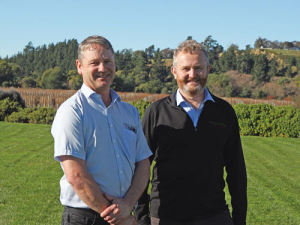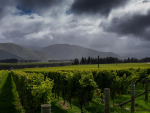The impact of weather and increasing costs are the two major reasons behind a drop in Marlborough growers’ profit before tax.
Those are the findings from the MPI/NZW 2018 Viticulture Benchmarking Model.
Released in August, the report shows that yields were down, and working expenses were up, resulting in a drop of 14 percent profit before tax, when compared with 2017.
Drawing information from 47 different vineyards in the region, the model is based on 30 hectares where Sauvignon Blanc makes up the majority of the plantings, followed by Pinot Noir, Pinot Gris, Chardonnay and Riesling.
Profit before tax was based at $10,000 per hectare, compared with $11,600 in 2017. That is despite prices paid for Sauvignon Blanc fruit being four percent higher in 2018.
The reason? Yields were down nine percent on average across all varieties and down 10 percent for Sauvignon Blanc. The weather is the reason given, in particular the rain which began shortly after New Year and continued off and on until harvest. In February Blenheim had 181 mm of rain, making it the wettest February since records began in 1930. Over three days 108 mm of rain fell, due to Cyclone Gita.
Putting that month’s rain into perspective, it was 452 percent of Blenheim’s long-term February average.
The result was an increase in vegetative growth – creating more work for growers in opening the canopy, mowing between rows and spraying for the ensuing risk of disease.
Inevitably, working expenses rose by three percent over 2017/18, but they were 15 percent higher when compared with the average of 2013-17.
“Disease, pest, and weed control costs continue to rise,” the report states. “The labour component increased 12 percent and the chemicals 10 percent compared with 2017.”
However growers were able to cut back on irrigation costs, and frost protection also dropped considerably, given the benign spring of 2017.
In terms of pricing, it was good news for growers, although not good enough to make up for the drop in yields. The model group average was $1930 per tonne – up five percent on 2017. Sauvignon Blanc prices increased by four percent, to $1825 per tonne.
Again the weather affected a number of growers, with seven of the model having penalty clauses activated, primarily due to disease issues Those penalties varied between $150 and $700 per tonne.
There were 350 tonnes or 1.8 percent of Sauvignon Blanc unharvested either due to fruit being rejected for not reaching quality standards, or for being over the winery cap. However there was a drop in the amount of rejected over-the-cap Sauvignon Blanc being on-sold. The total from the model group was 1.3 percent, compared with 2.5 percent in 2017. The average price paid for that excess fruit in 2018 was $990 per tonne.
In terms of 2019, growers are expecting an increase in yields to 13.5 tonnes – up six percent on what they achieved this year. They also expect the average price per tonne of all varieties and Sauvignon Blanc on its own, to remain at the same level as 2018.












